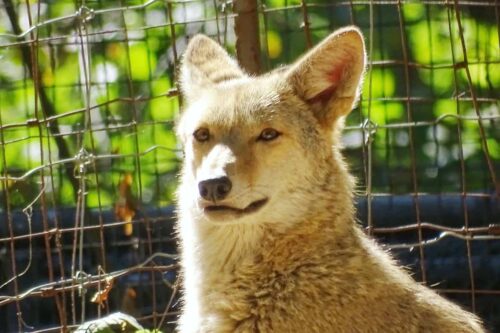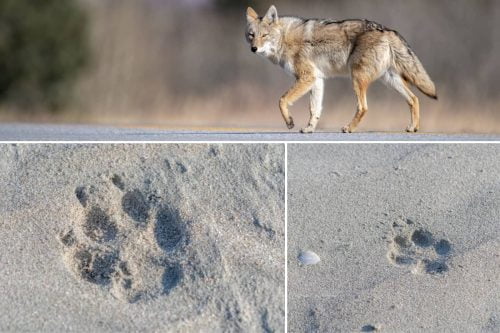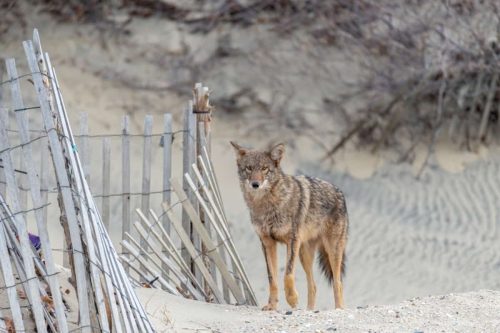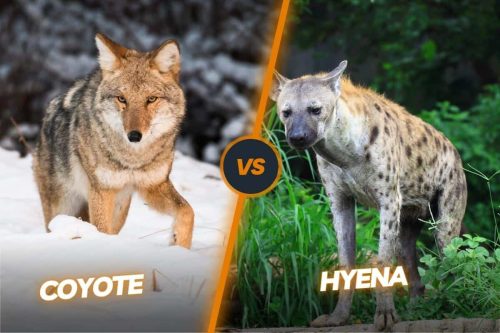Coyote Diseases: Are There Coyotes With Mange Or Rabies?
As coyote populations continue to expand in urban areas, so too does the risk of dangerous diseases spread by coyotes. If you have such concerns, you have come to the right spot. Today in this write-up, we will explore the prevalence of coyote-borne illnesses, their impact on communities, and how we can protect ourselves from these hidden threats. With coyotes living near humans, we must understand their risks and take the necessary precautions.

Contents
- Understanding Coyote Health and the Human Connection
- Why Understand the Impact of Coyotes Diseases Spread
- The Effect of Wildlife-Borne Illnesses on Coyotes
- How Vast is the World of Coyote Diseases?
- The Hidden Facts About Coyote with Mange
- Unraveling the Facts and Risks of Coyote Rabies
- How to Stop Coyote Diseases Spread?
- FAQs
- Final Verdict
Understanding Coyote Health and the Human Connection
Although wild animals play a significant role in our ecology, they can also threaten us. One of these animals, coyotes, may be dangerous to people if they are infected. We’ll be looking more closely at coyote diseases, as well as at how they affect people and what you need to know to keep safe.
We’ll talk about the various diseases that coyotes are susceptible to, how they spread, and what you can do to safeguard yourself. You may protect yourself by being better prepared for potential coyote encounters and aware of the risks.
Read how diseases are a challenge for petting a coyote.
Why Understand the Impact of Coyotes Diseases Spread
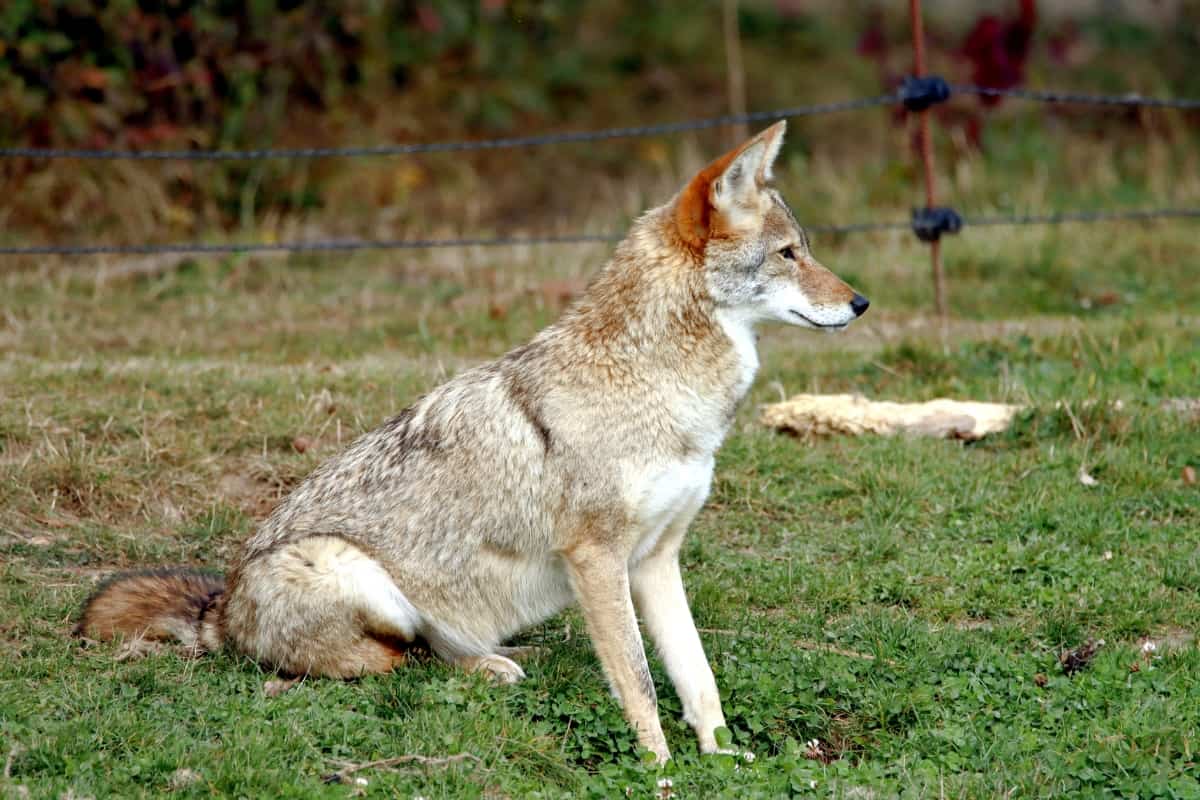
Coyote-borne diseases affect wildlife populations and put people and domestic animals at risk. Coyotes carry several illnesses, including Ehrlichiosis, Rocky Mountain Spotted Fever, and Lyme disease, all of which can be spread to people by ticks dined on coyotes.
As a result, it’s crucial to exercise caution when outdoors, especially in locations where coyotes are known to exist. Wearing long sleeves and pants, applying insect repellent, and checking for ticks after spending time in wooded areas are some of these practices.
Coyote management techniques can also be used to stop the spread of disease. Reducing attractants like exposed garbage cans or pet food left outside that may attract coyotes to urban or suburban settings is one of these techniques. The deliberate killing of ill coyotes or otherwise exhibiting disease symptoms can also halter the disease’s transmission among the populace.
We can assist in safeguarding both human and wildlife populations from the harmful effects of coyote-borne diseases by taking measures to understand and avoid these diseases.
The Effect of Wildlife-Borne Illnesses on Coyotes
Coyote-borne diseases can have a significant impact on wildlife in addition to humans. For instance, coyote populations are susceptible to the rapid spread of rabies, a severe problem for humans and animals. Aside from a coyote with rabies, a few coyote diseases can also affect foxes, raccoons, and skunks, among other types of wildlife. This makes it even more crucial to take preventative measures against coyote diseases since they can have a cascade effect on ecosystems and wildlife populations.
As sick and weak coyotes may be less successful hunters and hence less able to maintain their populations, coyote-borne diseases can also harm prey populations. This may cause an ecosystem to become unbalanced, impacting other species.
Distemper, parvovirus, and mange are some illnesses frequently observed in coyotes. Both domestic dogs and coyotes can die from distemper and parvovirus, while coyote mange can cause excruciating skin rashes and other health issues.
How Vast is the World of Coyote Diseases?
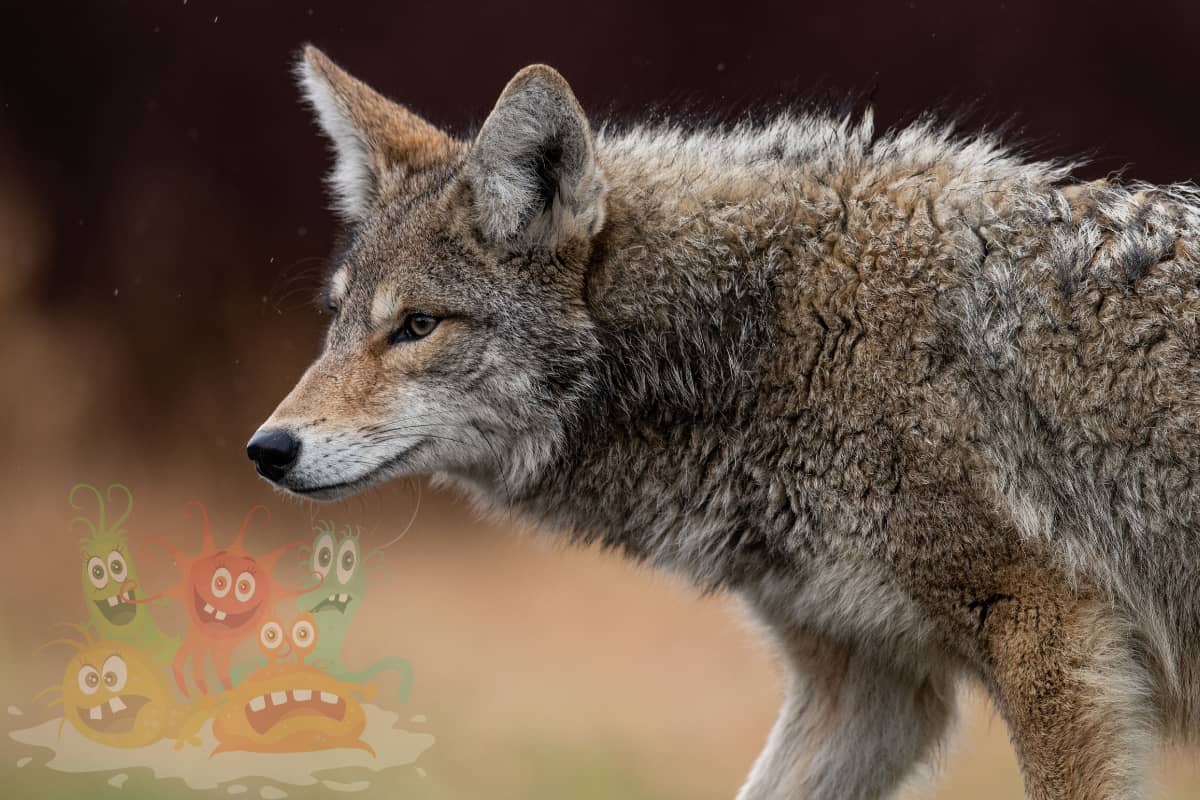
There are a lot of diseases that might attack coyotes. Like all other animals, coyotes are prone to illnesses that could be fatal to them and threaten their existence. When people come into contact with diseased animals or bodily fluids such as coyote poop or saliva, several diseases can also affect them.
Coyote diseases, which range from parasite ailments to bacterial infections, can have significant repercussions if neglected. To prevent exposure to these illnesses, you and your dogs should be aware of them and their symptoms.
Overall, it’s critical to be informed about these potential illnesses while interacting with coyotes and to take protective measures to avoid exposure. Coyote populations should be managed well to stop the spread of these diseases to wild and domestic animals. Though all these diseases are essential to study, we would discuss coyotes with rabies and coyote mange as these are the most significant.
The Hidden Facts About Coyote with Mange

An intelligent and adaptable member of the wild, the coyote occasionally becomes involved in the ravaging condition known as mange. This disease, brought on by parasitic mites that tunnel into the coyote’s skin, causes the mighty predator to suffer a torrent of agony. But despite all of this hardship, the coyote’s unbreakable spirit endures.
The coyote’s once-lustrous fur is destroyed by it, leaving behind patches of naked, inflamed skin. The Coyote with Mange scratching and scraping aggravate the itching and expose open wounds prone to infection. The coyote’s lively cry becomes a sad echo of a once-vibrant existence as its appearance deteriorates.
The Coyote with Mange’s tenacity in this conflict with the invisible foe is evident. Driven by a fundamental urge to survive, it is constantly uncomfortable. The affected species relentlessly searched the forest for food, changing its hunting tactics to compensate for its diminished strength. The coyote’s predatory prowess endures despite the effects of mange on the Coyote, serving as a reminder of our unyielding spirit.
The fate of the coyote with mange is a testament to how nature is in a delicate balance and how even the strongest creatures may be brought low by invisible forces. It inspires compassion and awe for these creatures who persevere in hardship. The struggle of the coyote against mange serves as a reminder that beauty and hardship are intertwined in nature’s tapestry and that the will to survive can persist even in the most trying situations.
Unraveling the Facts and Risks of Coyote Rabies
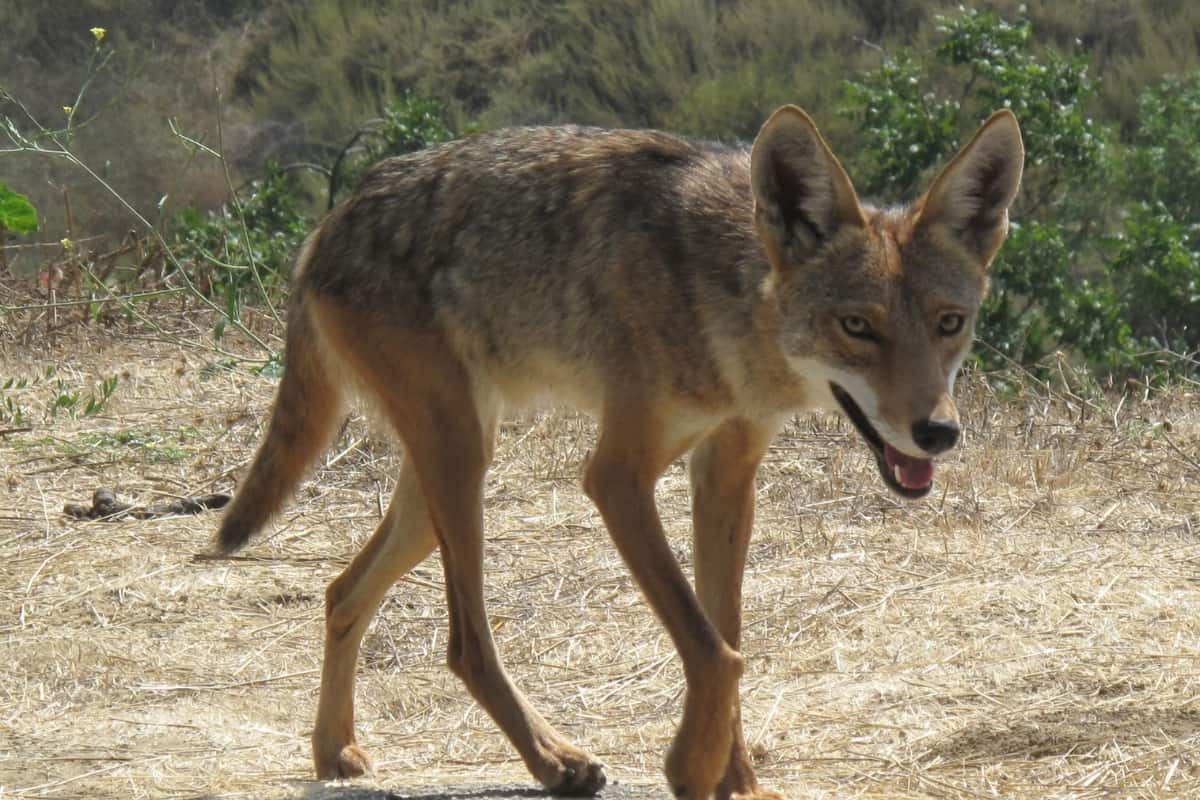
Coyotes, the canids who wander our landscapes and are intelligent and adaptive, are frequently the focus of attention and fascination. While they are necessary for maintaining ecosystem balance, they must be aware of the threats they may represent as disease carriers, including rabies.
Do Coyotes Harbor and Spread the Rabies Virus?
The common question is, “Do coyotes have rabies?” Yes, is the answer. Coyotes have the same risk of rabies as other mammals. It’s crucial to remember that not all coyotes are sick, though. The primary way that rabies is spread is by an animal’s saliva, usually after a bite or scratch.
Coyote Rabies Symptoms and Prevalence
Coyote rabies symptoms must be recognized to protect the people and preserve wildlife. Aggression, mouth foaming, unpredictable behavior, and disorientation are typical signs. But it’s important to remember that other illnesses or injuries might induce similar behaviors, so you shouldn’t draw any conclusions based on these symptoms.
Each region has a different level of coyote rabies prevalence. The disease may be more prevalent in some regions but relatively uncommon in others. To put appropriate measures in place, like vaccination campaigns or population management techniques, local wildlife authorities and health organizations frequently monitor the prevalence of rabies.
Protecting both human and animal health requires understanding the dangers of coyote rabies. The fact that healthy coyotes typically avoid encounters with people and domestic animals must always be kept in mind. To ensure the situation is handled appropriately, you should alert local authorities if you see a coyote acting strangely or believe it might be rabid.
It is possible to safeguard both ourselves and our pets against rabies exposure through proper behavior. The likelihood of coming into touch with coyotes and other wildlife can be reduced by immunizing household animals, locking up waste, and getting rid of attractants.
How to Stop Coyote Diseases Spread?
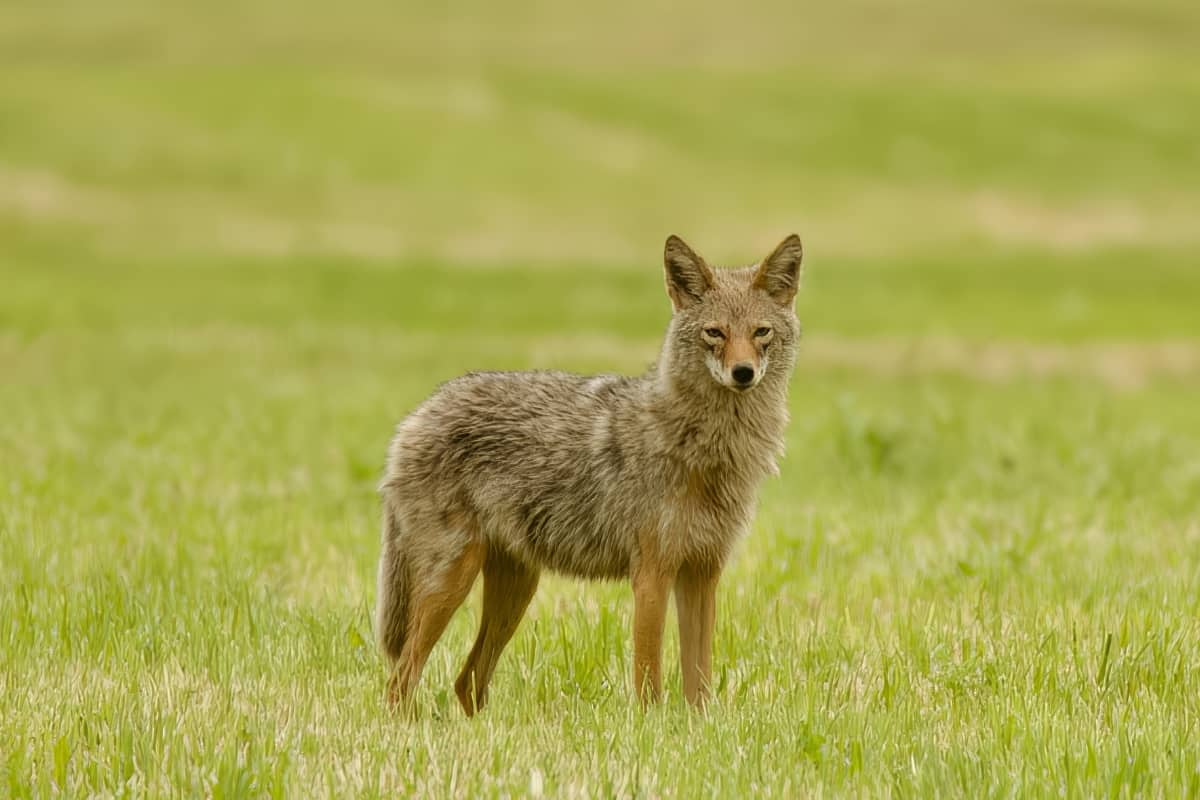
To stop the spread of disease, coyote management techniques are being used. Along with employing non-lethal control techniques, including deterrents or habitat alteration, these can include initiatives to lessen coyote-human contact through education and outreach. As we work to cohabit with these exciting and frequently misunderstood creatures, we must strike a balance between protecting humans and wildlife.
Coyote Management Techniques to Stop the Spread of Illness
Coyote-borne diseases may not be completely curable, but some methods can be used to lessen the chance of spreading to people and domestic animals. One practical strategy is to reduce human and animal exposure to coyotes by removing attractants like pet food left outside and unsecured waste.
Communities can also develop targeted coyote capture and removal programs to stop the spread of disease among sick or injured coyotes. Campaigns for public education and awareness can be highly effective in encouraging ethical pet ownership, which includes immunizing animals against illnesses commonly spread by coyotes, including rabies and distemper. A complete and coordinated approach involving wildlife experts, public health officials, and community people is required for efficient coyote management and disease prevention.
FAQs
Final Verdict
Coyotes are essential to our ecology and should be treated with respect. Maintaining their health, as well as our own and that of our domestic animals largely depends on our ability to understand the diseases they carry.
Coyotes are merely attempting to exist in the same habitat as us, despite the temptation to see them as a nuisance or menace. Positive contact with these animals can be avoided by locking up rubbish and pet food.
Education is essential for disease management. We can live safely and successfully among coyotes if we know the risks and how to reduce them. Additionally, we must back initiatives for wildlife management that put the well-being of coyotes and the ecosystem they live in first.

Ray is an experienced wildlife researcher with a background in veterinary medicine. His contributions have significantly advanced our understanding of various wild animals.

